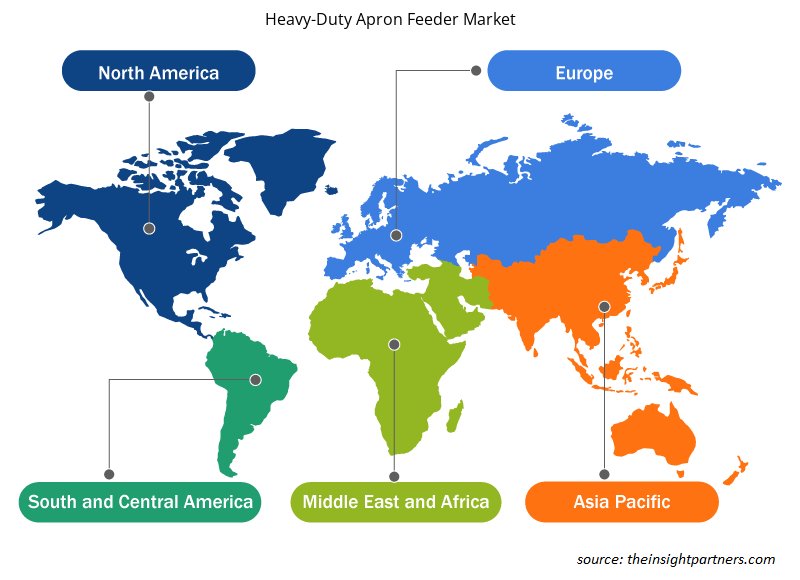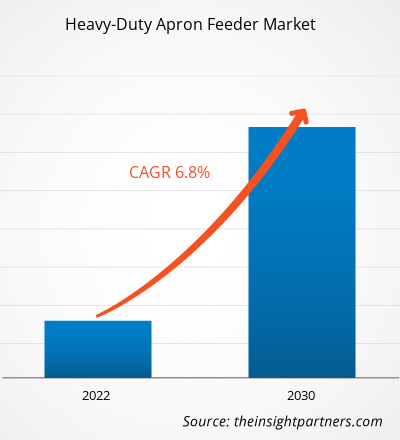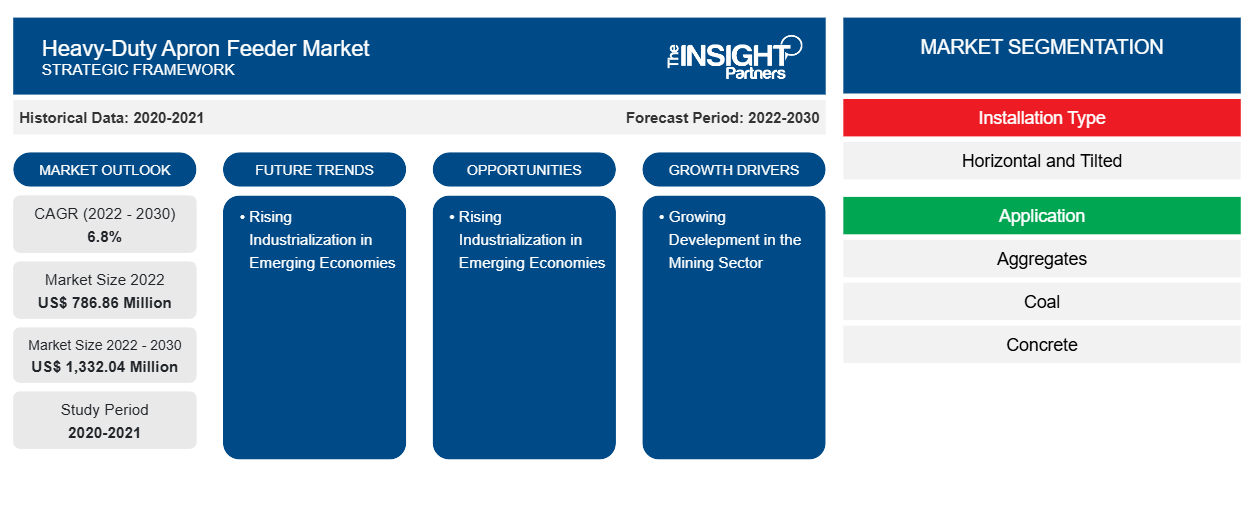重型板式给料机市场规模预计将从 2022 年的 7.8686 亿美元增至 2030 年的 13.3204 亿美元。预计 2022-2030 年期间市场复合年增长率将达到6.8%。采矿业的不断发展和新技术的不断进步可能仍是市场的主要趋势。
重型板式给料机市场分析
制造商设计、生产和供应各种类型的重型板式给料机,包括水平、倾斜和全自动给料系统。他们努力提供创新和技术先进的解决方案,以满足采矿、骨料、建筑等行业的明确需求。重型给料机服务提供商为各种采矿、建筑、骨料、破碎和其他工厂提供维护、设计和安装服务。他们操作和维护重型给料机设备,确保安全和精简的操作。维护和支持提供商提供服务以确认设备的正确实施和维护。他们定期进行检查、维修和预防性维护,以保持设备处于最佳状态。矿产勘探活动的增加预计将推动重型板式给料机市场的增长
重型板式给料机市场概况
最终用户在重型板式给料机市场生态系统中发挥着关键作用。作为重型给料机设备和服务的主要消费者,他们对需求、规格和安装类型要求的偏好有直接影响。最终用户通过推动需求、影响技术进步、确保安全和合规以及促进与设备制造商的合作,在塑造重型板式给料机市场方面发挥着重要作用。
定制此报告以满足您的需求
您可以免费定制任何报告,包括本报告的部分内容、国家级分析、Excel 数据包,以及为初创企业和大学提供优惠和折扣
- 获取此报告的关键市场趋势。这个免费样品将包括数据分析,从市场趋势到估计和预测。
重型板式给料机市场驱动因素和机遇
采矿业不断发展,利好市场
全球人口的增长推动了对更多矿物和电力的需求。这将使采矿和矿物相关活动升级,间接推动重型板式给料机市场的发展。劳动力动态(例如熟练劳动力的可用性)可能会影响生产和维护过程,这也推动了重型板式给料机市场的需求。美国采矿业包括对地球上自然存在的固体矿物的勘探、提取、选矿和加工。煤炭、金属(如铁和铜)和工业矿物是开采矿物的例子。美国是全球矿产和金属的主要生产国和使用者。开采的材料对消费者和工业技术至关重要,决定了美国的总体工业扩张。除美国外,中国是过去几年采矿业成倍增长的另一个国家。因此,美国和中国等发达国家的采矿业持续增长。采矿业的增长直接影响了该行业对轮式装载机和轮式推土机等设备的需求,最终推动了发达国家对采矿再制造部件的需求。
新兴经济体工业化进程加快
美国等多个发达国家的政府已采取各种举措来支持该国的工业部门。政府举措为该地区的工业公司提供了各种好处,并推动了该国工业部门的增长。从而影响了市场增长。位于欧洲的制造公司数量众多,得益于发达的设施。作为一个强大的经济体,公司可以将更多资金投入到促进未来技术发展的创新上。大量投资可以带来全球重型板式给料机市场的更多增长。
重型板式给料机市场报告细分分析
有助于得出重型板式给料机市场分析的关键部分是安装类型和应用。
- 根据安装类型,重型板式给料机市场分为水平和倾斜两种。水平部分在 2022 年占据了较大的市场份额。
- 根据应用,市场分为骨料、煤炭、混凝土、采矿和其他。采矿业在 2022 年占据了相当大的市场份额。
重型板式给料机市场份额按地区分析
重型板式给料机市场报告的地理范围主要分为五个区域:北美、亚太、欧洲、中东和非洲、南美和中美。
亚太地区引领市场。亚太地区多个国家的政府正在采取措施促进本国工业和制造业的发展。这些举措包括提供退税、补贴、基金和其他此类规定来支持工业部门。此外,中国、印度、韩国等国家正致力于发展采矿业,这也推动了重型板式给料机市场的增长。亚太地区是制造业的中心。该地区,特别是中国、印度、日本、台湾和韩国等国家,是商品、产品和服务出口最多的地区之一。例如,中国在全球汽车生产中占有最大份额。强大的制造业将有助于该地区的市场增长。
重型板式给料机市场区域洞察
Insight Partners 的分析师已详尽解释了预测期内影响重型围裙给料机市场的区域趋势和因素。本节还讨论了北美、欧洲、亚太地区、中东和非洲以及南美和中美洲的重型围裙给料机市场细分和地理位置。

- 获取重型板式给料机市场的区域特定数据
重型板式给料机市场报告范围
| 报告属性 | 细节 |
|---|---|
| 2022 年市场规模 | 7.8686亿美元 |
| 2030 年市场规模 | 13.3204亿美元 |
| 全球复合年增长率(2022 - 2030 年) | 6.8% |
| 史料 | 2020-2021 |
| 预测期 | 2022-2030 |
| 涵盖的领域 | 按安装类型
|
| 覆盖地区和国家 | 北美
|
| 市场领导者和主要公司简介 |
|
市场参与者密度:了解其对商业动态的影响
重型围裙给料机市场正在快速增长,这得益于终端用户需求的不断增长,而这些需求又源于消费者偏好的不断变化、技术进步以及对产品优势的认识不断提高等因素。随着需求的增加,企业正在扩大其产品范围,进行创新以满足消费者的需求,并利用新兴趋势,从而进一步推动市场增长。
市场参与者密度是指在特定市场或行业内运营的企业或公司的分布情况。它表明在给定市场空间中,相对于其规模或总市场价值,有多少竞争对手(市场参与者)存在。
在重型板式给料机市场运营的主要公司有:
- 史密斯
- 梅卡
- 美卓奥图泰公司
- 麦克拉纳汉
- 山特维克公司
- 塔克拉夫有限公司
免责声明:上面列出的公司没有按照任何特定顺序排列。

- 获取重型围裙给料机市场顶级关键参与者概述
重型板式给料机市场新闻和最新发展
通过收集主要和次要研究后的定性和定量数据来评估重型围裙给料机市场,其中包括重要的公司出版物、协会数据和数据库。重型围裙给料机市场的一些发展如下所列:
- 加拿大 First Quantum Minerals (FQM) 公司已向美卓下达额外订单,为其位于赞比亚的 Kansanshi 铜矿 S3 扩建项目提供矿物加工设备,该项目计划于 2022 年开始。该交易价值超过 2000 万欧元,已记录在矿产部门第二季度收到的订单中。美卓的交付线包括板式给料机、Nordberg MP800TM 圆锥破碎机和各种其他机器。(来源:美卓,新闻稿,2023 年 7 月)
- 美卓已同意收购 Brouwer Engineering,这是一家澳大利亚私营公司,专门从事散装物料处理的控制系统、自动化和电气解决方案。(来源:美卓,新闻稿,2023 年 7 月)
重型板式给料机市场报告覆盖范围和交付成果
“重型板式给料机市场规模和预测(2020-2030 年)”报告对以下领域进行了详细的市场分析:
- 重型板式给料机市场规模以及本范围涵盖的所有主要细分市场的全球、区域和国家/地区预测
- 重型板式给料机市场趋势以及市场动态,如驱动因素、限制因素和关键机遇
- 详细的 PEST 和 SWOT 分析
- 重型板式给料机市场分析,涵盖关键市场趋势、全球和区域框架、主要参与者、法规和最新市场发展
- 行业格局和竞争分析,涵盖市场集中度、热点图分析、知名参与者以及重型板式给料机市场的最新发展
- 详细的公司简介
- 历史分析(2 年)、基准年、预测(7 年)及复合年增长率
- PEST和SWOT分析
- 市场规模、价值/数量 - 全球、区域、国家
- 行业和竞争格局
- Excel 数据集
近期报告
客户评价
购买理由
- 明智的决策
- 了解市场动态
- 竞争分析
- 客户洞察
- 市场预测
- 风险规避
- 战略规划
- 投资论证
- 识别新兴市场
- 优化营销策略
- 提升运营效率
- 顺应监管趋势





















 获取免费样品 - 重型板式给料机市场
获取免费样品 - 重型板式给料机市场